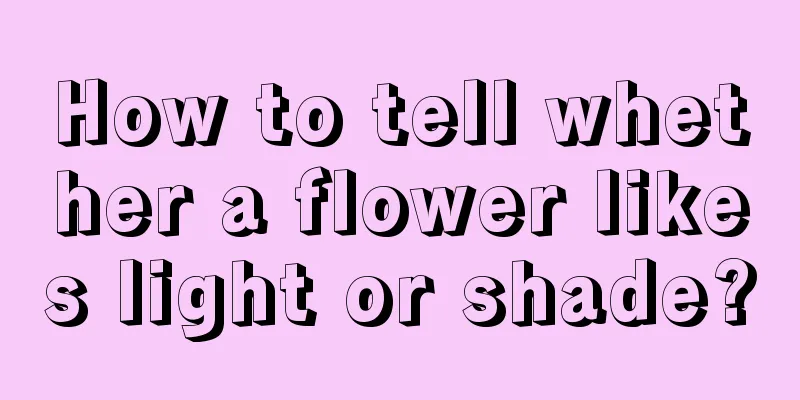How to tell whether a flower likes light or shade?

Which flowers like light and which flowers like shade?Different flowers have different requirements for sunlight and can be roughly divided into four types. Positive flowersThis type of flowers requires plenty of sunlight, and some flowers even need a long-day environment of more than 14 hours to differentiate flower buds, bloom larger and brighter flowers, and grow well. This type of flowers includes gladiolus, iris, coneflower phlox, impatiens, aster, rose, pomegranate, barbata, Oxalis, lotus, crape myrtle, Milan, citrus, pansy, fig, oleander, rubber tree, etc. Neutral FloralIt is between sun-loving flowers and shade-loving flowers and does not require particularly long periods of sunlight. Such as osmanthus, jasmine, hibiscus, nephew, begonia and so on. Shade-loving flowersIt grows well in the shade and can only receive slightly more light in winter and early spring. Such as camellia, azalea, Guangdong evergreen, asparagus fern, etc. Strong shade-loving flowersIt is native to shady and moist areas such as tropical rain forests, shady slopes of mountains, and valleys. Even if the sunlight is not too strong, it still needs proper shade. Such as spring orchid, Boston fern, etc. How to judge?Judging from the leaf shapePlants with needle-shaped leaves, such as cedar, larch, and five-needle pine, mostly like the sun; plants with flat or scaly leaves, such as Podocarpus, Platycladus orientalis, and Cypress, are slightly shade-tolerant; deciduous broad-leaved flowers and trees mostly like the sun, such as chrysanthemum, rose, Mirabilis jalapa, plum blossom, etc.; evergreen broad-leaved flowers and trees, such as Begonia, Monstera, Schefflera, Dieffenbachia, Gardenia, Camellia, etc., mostly prefer semi-shade or shade. Judging from the density of branches and leavesFlowers with small and dense branches and leaves are mostly shade-loving flowers, such as asparagus fern, asparagus, maidenhair fern, Japanese maple, nandina domestica, etc. Most of the flowers with sparse but spreading branches and leaves are positive flowers, such as petunia, croton, impatiens, oleander, etc. |
>>: How to judge whether flowers are lack of water
Recommend
Precautions for repotting the fortune tree: repotting methods and key points to pay attention to
Things to note when repotting the fortune tree Th...
Growing environment conditions and characteristics of golden thread vine
Growing environment conditions and requirements o...
Can the Free Spirit rose be potted?
Can the Free Spirit rose be potted? Free Spirit R...
The efficacy and function of cantaloupe
effect 1. Cantaloupe tastes very sweet and is gre...
How often should I water my succulent plant?
How often should I water my succulent plant? The ...
How to grow a money tree
1. Soil preparation It likes to grow in light aci...
How to divide hyacinth bulbs
Bulb propagation The method of dividing the bulbs...
What are the Feng Shui effects of planting bougainvillea at home?
Bougainvillea is suitable for people who belong t...
What to do after hyacinth is pinched by arrows
reason Low temperature Hyacinths generally need t...
Camellia's effects and benefits on the skin and its benefits to humans
1. Effects and benefits on the skin 1. Lighten sp...
What to do if the bulbs are rotten or frostbitten?
How to deal with bulb rot When storing plant bulb...
Which month is best for planting pumpkins?
Pumpkin is a popular vegetable known for its rich...
When is the best month to prune bougainvillea? Time and method for pruning potted bougainvillea
Bougainvillea pruning time Bougainvillea needs to...
What fertilizer to use for grapes
The root system of grapes is relatively developed...
Why are cacti not afraid of drought?
1. Huge root system The root system of cactus is ...









